Intangible Cultural Property (Japan)
An Intangible Cultural Property (無形文化財 mukei bunkazai), as defined by the Japanese government's Law for the Protection of Cultural Properties (1950), is a part of the Cultural Properties[note 1] of high historical or artistic value such as drama, music, and craft techniques. The term refers exclusively to human skills possessed by individuals or groups which are indispensable to produce Cultural Properties.[1]
Items of particular importance can be designated as Important Intangible Cultural Properties (重要無形文化財 jūyō mukei bunkazai).[1] Recognition is also given to the owners of an item to encourage its transmission.[2] There are three types of recognition: individual recognition, collective recognition, and group recognition. Special grants of two million yen a year are given to individual holders (the so-called National Living Treasures[2]) to help protect their properties. The government also contributes part of the expenses incurred either by the holder of an Intangible Cultural Property during training of his successor, or by a recognized group for public performances.[2]
To promote the understanding, and therefore the transmission across generations, of Cultural Properties, exhibitions concerning them are organized. The government through the Japan Arts Council also holds training workshops and other activities to educate future generations of noh, bunraku, and kabuki personnel.[2]
Important Intangible Cultural Properties
Performance Traditions
Crafts
| Medium | Name | Comments | Region | Registered | Image |
|---|---|---|---|---|---|
| Ceramics | Bizen-yaki (備前焼)[59][60][61][62] | High-fired, unglazed stoneware; one of the six ancient kilns; production in and around Imbe village from the twelfth century | Okayama Prefecture | 2004 | |
| Ceramics | Hakuji (白磁)[61][63] | Undecorated white porcelain; influenced by Chinese examples; production began in the Arita area in the first half of the seventeenth century | 1995 | ||
| Ceramics | Iro-Nabeshima (色鍋島)[64][65] | A type of iro-e overglaze enamel, often with a blue under-glaze; from the domain of the Nabeshima clan; production from the second half of the seventeenth century | Saga Prefecture | 1976 |  |
| Ceramics | Kakiemon (nigoshide) (柿右衛門 (濁手))[61][65][66][67] | A type of iro-e overglaze enamel; created by Sakaida Kakiemon in the 1640s; nigoshide, the white ground against which the enamels are applied, was revived by Sakaida Kakiemon XII in the 1950s | Saga Prefecture | 1971 |  |
| Ceramics | Mumyōi-yaki (無名異焼)[68][69][70] | Mumyōi is the red ferrous clay of Sado island; production in Aikawa from the early nineteenth century | Niigata Prefecture | 2003 | |
| Ceramics | Onta ware (小鹿田焼)[71][72][73] | Thick slipware; production in Hita from the early eighteenth century; one of the 100 Soundscapes of Japan | Ōita Prefecture | 1995 | |
| Ceramics | Seto-guro (瀬戸黒)[61][74][75] | Black Seto; the colour is obtained by removing the glazed vessel from the kiln at the height of firing and cooling it rapidly; production in Mino Province from the late sixteenth century | Gifu Prefecture | ||
| Ceramics | Seiji (青磁)[61][76] | The pale-green colour of celadon is obtained from a feldspathic glaze and reduction firing; introduced from the continent | 2007 | 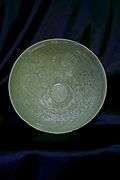 | |
| Ceramics | Shino (志野)[61][77][78][79] | Stoneware with a white feldspathic glaze; production in Mino Province from the late sixteenth century | Gifu Prefecture | 1994 |  |
| Ceramics | Tetsuyū-tōki (鉄釉陶器)[80] | Iron-glaze stoneware | 2005 | ||
| Ceramics | Yūri-kinsai (釉裏金彩)[61][81] | Gold leaf or gold enamel is applied to a glazed surface which is then glazed and fired again, enhancing the durability of the decoration | 2001 | ||
| Textiles | Ise-katagami (伊勢型紙)[82] | Paper stencils | Mie Prefecture | 1993 | |
| Textiles | Kijōka-bashōfu (喜如嘉の芭蕉布)[83][84] | banana fibre cloth | Okinawa Prefecture | 1974 | |
| Textiles | Kumejima-tsumugi (久米島紬)[85] | pongee/kasuri | Okinawa Prefecture | 2004 | |
| Textiles | Kurume-kasuri (久留米絣)[86] | Fukuoka Prefecture | 1957 | ||
| Textiles | Miyako-jōfu (宮古上布)[87] | Okinawa Prefecture | 1978 | ||
| Textiles | Tate-nishiki (経錦)[84][88] | Vertical brocade of ancient origin, revived by Kitamura Takeshi | 2000 | ||
| Textiles | Yūki-tsumugi (結城紬)[89][90] | Inscribed on the UNESCO Representative List of the Intangible Cultural Heritage of Humanity in 2010 | 1956 | ||
| Textiles | Kenjō Hakata weave (献上博多織)[91] | Fukuoka Prefecture | 2003 | ||
| Textiles | Edo komon (江戸小紋)[84][92] | Edo fine pattern; stencil resist dyeing technique popular in the Edo period | 1978 |  | |
| Textiles | Bingata (紅型)[84][93] | Stencil or resist paste weave; in the eighteenth century its use by commoners was restricted | Okinawa Prefecture | 1996 | 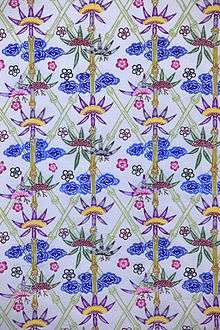 |
| Textiles | Saga-nishiki (佐賀錦)[84][94] | Brocade that developed in the early nineteenth century and was widespread by the early twentieth | Saga Prefecture | 1994 | 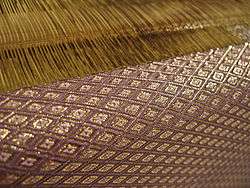 |
| Textiles | Embroidery (刺繍 Shishū)[95] | 1997 | | ||
| Textiles | Shuri weave (首里の織物)[96] | Okinawa Prefecture | 1998 | ||
| Textiles | Ojiya-chijimi - Echigo-jōfu (小千谷縮・越後上布)[97][98] | Inscribed on the UNESCO Representative List of the Intangible Cultural Heritage of Humanity in 2009 | Niigata Prefecture | 1955 | |
| Textiles | Seigō Sendai-hira (精好仙台平)[99] | Miyagi Prefecture | 2002 | ||
| Textiles | Tsumugi weave (紬織)[84][100] | Woven from hand-spun silk floss | 1990 | ||
| Textiles | Bashōfu (芭蕉布)[84][101] | Bashō-fibre cloth | Okinawa Prefecture | 2000 | |
| Textiles | Mokuhanzuri-sarasa (木版摺更紗)[102] | 2008 | |||
| Textiles | Monsha (紋紗)[103][104] | Figured gauze weave silk | |||
| Textiles | Yūzen (友禅)[84][105][106] | Paste-resist dyeing; perfected around 1700 by Miyazaki Yūzen | 1955 | ||
| Textiles | Yūsoku weave (有職織物)[107] | 1999 | |||
| Textiles | Ra (羅)[84][108][109] | A form of gauze weave; examples are found in the Shōsōin | 1995 | ||
| Lacquerware | Chinkin (沈金)[110][111][112][113] | Incised and filled with gold leaf or powder applied over wet lacquer; popular in China from the Song dynasty and particularly associated with Wajima ware | 1999 |  | |
| Lacquerware | Kinma (蒟醤)[111][114][115] | Incised and colour-filled; introduced from the continent, prized in the Muromachi period, and perfected around Takamatsu in the Edo period | 1985 | ||
| Lacquerware | Kyūshitsu (髹漆)[116][117] | Sequential lacquering technique with four main phases: substrate, priming, intermediate coating, and top coating | 1974 | ||
| Lacquerware | Maki-e (蒔絵)[111][118][119] | Sprinkled picture decoration using metallic powder or pigment; dates to the Heian period | 1955 |  | |
| Lacquerware | Raden (螺鈿)[111][120][121] | Shell (Mother-of-pearl, abalone, nautilus) inlay | 1999 | ||
| Lacquerware | Wajima-nuri (輪島塗)[113][122][123] | A mixture of burned diatomaceous earth, rice paste, and lacquer is used for the layers of undercoat; the earliest example, the doors of Juzo Jinja, date to 1524 | Ishikawa Prefecture | 1977 | |
| Metalwork | Metal chasing (彫金 chōkin)[124][125] | Several engraving techniques have been practised since the dōtaku of the Yayoi period | 1978 |  | |
| Metalwork | Metal casting (鋳金 chūkin)[126][127] | Several casting techniques have been practised since the dōtaku of the Yayoi period, including lost-wax casting | 1993 |  | |
| Metalwork | Sword Polishing (刀剣研磨 tōken kenma) | 1975 | |||
| Metalwork | Dora (銅鑼)[128] | Gongs | 2002 |  | |
| Metalwork | Repoussé (鍛金 tankin)[129][130] | 1995 | |||
| Woodworking | Bamboo-work (竹工芸 ちくこうげい)[131] | 1982 | |||
| Woodworking | Wood-work (木工芸 もくこうげい)[132] | 1984 | |||
| Dolls | Ishō-ningyō (衣裳人形)[133][134] | Costume dolls, dressed in tailored clothing made from dyed and woven textiles | 1986 |  | |
| Dolls | Tōso-ningyō (桐塑人形)[134][135] | Paulownia sawdust, mixed with wheat starch and plum paste, is used to form a plaster for casting; once dry it is hard enough to be sculpted | 2002 | ||
| Washi | Echizen-hōsho (越前奉書)[136][137][138] | High-quality paper, used for official orders since the Muromachi period; paper-making in the region is known from the Engishiki | Fukui Prefecture | 2000 | |
| Washi | Hon-Minogami (本美濃紙)[139][140] | Mulberry paper from Mino Province; records in the Shōsō-in refer to three paper-making regions: Chikuzen Province, Buzen Province, and Mino Province | Gifu Prefecture | 1969 | |
| Washi | Hosokawa-shi (細川紙)[141] | 1978 | |||
| Washi | Najio-ganpishi (名塩雁皮紙)[142][143] | Made from the ganpi plant | Hyōgo Prefecture | 2002 | |
| Washi | Sekishū-banshi (石州半紙)[144][145] | The strongest paper produced in Japan; used for shōji, calligraphy, and conservation-restoration; inscribed on the UNESCO Representative List of the Intangible Cultural Heritage of Humanity in 2009 | Shimane Prefecture | 1969 | |
| Washi | Tosa-tengujōshi (土佐典具帖紙)[146][147] | A very-fine, strong paper developed around 1900 by Genta Yoshii | Kōchi Prefecture | 2001 | |
See also
- For lists of holders of Important Intangible Cultural Properties, see List of Living National Treasures of Japan (crafts) and List of Living National Treasures of Japan (performing arts)
- Cultural Properties of Japan
- Important Intangible Cultural Properties of Korea
- UNESCO Intangible Cultural Heritage Lists
Notes
- ↑ In this article, capitals indicate an official designation as opposed to a simple definition, e.g "Cultural Properties" as opposed to "cultural properties".
References
- 1 2 "Cultural Properties for Future Generations" (PDF). Administration of Cultural Affairs in Japan ― Fiscal 2009. Agency for Cultural Affairs. June 2007.
- 1 2 3 4 "Preservation and Utilization of Cultural Properties" (PDF). Administration of Cultural Affairs in Japan ― Fiscal 2009. Agency for Cultural Affairs. 2009.
- ↑ "Database of Registered National Cultural Properties". Agency for Cultural Affairs. Retrieved 2 May 2011.
- ↑ "Gagaku". UNESCO. Retrieved 2 May 2011.
- ↑ "Database of Registered National Cultural Properties". Agency for Cultural Affairs. Retrieved 2 May 2011.
- ↑ "Database of Registered National Cultural Properties". Agency for Cultural Affairs. Retrieved 2 May 2011.
- ↑ "Database of Registered National Cultural Properties". Agency for Cultural Affairs. Retrieved 2 May 2011.
- ↑ "Database of Registered National Cultural Properties". Agency for Cultural Affairs. Retrieved 2 May 2011.
- ↑ "Nôgaku Theatre". UNESCO. Retrieved 3 May 2011.
- ↑ "Database of Registered National Cultural Properties". Agency for Cultural Affairs. Retrieved 2 May 2011.
- ↑ "Database of Registered National Cultural Properties". Agency for Cultural Affairs. Retrieved 2 May 2011.
- ↑ "Database of Registered National Cultural Properties". Agency for Cultural Affairs. Retrieved 2 May 2011.
- ↑ "Database of Registered National Cultural Properties". Agency for Cultural Affairs. Retrieved 2 May 2011.
- ↑ "Database of Registered National Cultural Properties". Agency for Cultural Affairs. Retrieved 2 May 2011.
- ↑ "Ningyo Johruri Bunraku Puppet Theatre". UNESCO. Retrieved 2 May 2011.
- ↑ "Database of Registered National Cultural Properties". Agency for Cultural Affairs. Retrieved 2 May 2011.
- ↑ "Database of Registered National Cultural Properties". Agency for Cultural Affairs. Retrieved 2 May 2011.
- ↑ "Database of Registered National Cultural Properties". Agency for Cultural Affairs. Retrieved 2 May 2011.
- ↑ "Database of Registered National Cultural Properties". Agency for Cultural Affairs. Retrieved 2 May 2011.
- ↑ "Kabuki Theatre". UNESCO. Retrieved 2 May 2011.
- ↑ "Database of Registered National Cultural Properties". Agency for Cultural Affairs. Retrieved 2 May 2011.
- ↑ "Database of Registered National Cultural Properties". Agency for Cultural Affairs. Retrieved 2 May 2011.
- ↑ "Database of Registered National Cultural Properties". Agency for Cultural Affairs. Retrieved 2 May 2011.
- ↑ "Database of Registered National Cultural Properties". Agency for Cultural Affairs. Retrieved 2 May 2011.
- ↑ "Database of Registered National Cultural Properties". Agency for Cultural Affairs. Retrieved 2 May 2011.
- ↑ "Kumiodori, traditional Okinawan musical theatre". UNESCO. Retrieved 2 May 2011.
- ↑ "Database of Registered National Cultural Properties". Agency for Cultural Affairs. Retrieved 2 May 2011.
- ↑ "Database of Registered National Cultural Properties". Agency for Cultural Affairs. Retrieved 2 May 2011.
- ↑ "Database of Registered National Cultural Properties". Agency for Cultural Affairs. Retrieved 2 May 2011.
- ↑ "Database of Registered National Cultural Properties". Agency for Cultural Affairs. Retrieved 2 May 2011.
- ↑ "Database of Registered National Cultural Properties". Agency for Cultural Affairs. Retrieved 2 May 2011.
- ↑ "Database of Registered National Cultural Properties". Agency for Cultural Affairs. Retrieved 2 May 2011.
- ↑ "Database of Registered National Cultural Properties". Agency for Cultural Affairs. Retrieved 2 May 2011.
- ↑ "Database of Registered National Cultural Properties". Agency for Cultural Affairs. Retrieved 2 May 2011.
- ↑ "Database of Registered National Cultural Properties". Agency for Cultural Affairs. Retrieved 2 May 2011.
- ↑ "Database of Registered National Cultural Properties". Agency for Cultural Affairs. Retrieved 2 May 2011.
- ↑ "Database of Registered National Cultural Properties". Agency for Cultural Affairs. Retrieved 2 May 2011.
- ↑ "Database of Registered National Cultural Properties". Agency for Cultural Affairs. Retrieved 2 May 2011.
- ↑ "Database of Registered National Cultural Properties". Agency for Cultural Affairs. Retrieved 2 May 2011.
- ↑ "Database of Registered National Cultural Properties". Agency for Cultural Affairs. Retrieved 2 May 2011.
- ↑ "Database of Registered National Cultural Properties". Agency for Cultural Affairs. Retrieved 2 May 2011.
- ↑ "Database of Registered National Cultural Properties". Agency for Cultural Affairs. Retrieved 2 May 2011.
- ↑ "Database of Registered National Cultural Properties". Agency for Cultural Affairs. Retrieved 2 May 2011.
- ↑ "Database of Registered National Cultural Properties". Agency for Cultural Affairs. Retrieved 2 May 2011.
- ↑ "Database of Registered National Cultural Properties". Agency for Cultural Affairs. Retrieved 2 May 2011.
- ↑ "Database of Registered National Cultural Properties". Agency for Cultural Affairs. Retrieved 2 May 2011.
- ↑ "Database of Registered National Cultural Properties". Agency for Cultural Affairs. Retrieved 2 May 2011.
- ↑ "Database of Registered National Cultural Properties". Agency for Cultural Affairs. Retrieved 2 May 2011.
- ↑ "Database of Registered National Cultural Properties". Agency for Cultural Affairs. Retrieved 2 May 2011.
- ↑ "Database of Registered National Cultural Properties". Agency for Cultural Affairs. Retrieved 2 May 2011.
- ↑ "Database of Registered National Cultural Properties". Agency for Cultural Affairs. Retrieved 2 May 2011.
- ↑ "Database of Registered National Cultural Properties". Agency for Cultural Affairs. Retrieved 2 May 2011.
- ↑ "Database of Registered National Cultural Properties". Agency for Cultural Affairs. Retrieved 2 May 2011.
- ↑ "Database of Registered National Cultural Properties". Agency for Cultural Affairs. Retrieved 2 May 2011.
- ↑ "Database of Registered National Cultural Properties". Agency for Cultural Affairs. Retrieved 2 May 2011.
- ↑ "Database of Registered National Cultural Properties". Agency for Cultural Affairs. Retrieved 2 May 2011.
- ↑ "Database of Registered National Cultural Properties". Agency for Cultural Affairs. Retrieved 2 May 2011.
- ↑ "Database of Registered National Cultural Properties". Agency for Cultural Affairs. Retrieved 2 May 2011.
- ↑ "Database of Registered National Cultural Properties". Agency for Cultural Affairs. Retrieved 15 March 2011.
- ↑ Wilson, Richard L. (1995). Inside Japanese Ceramics: A Primer of Materials, Techniques, and Traditions. Weatherhill. pp. 155–8. ISBN 978-0-8348-0442-5.
- 1 2 3 4 5 6 7 Rousmaniere, Nicole (2007). Crafting Beauty in Modern Japan. British Museum. pp. 158–160. ISBN 978-0-7141-2448-3.
- ↑ "Bizenyaki". Japanese Architecture and Art Net Users System. Retrieved 2 May 2011.
- ↑ "Database of Registered National Cultural Properties". Agency for Cultural Affairs. Retrieved 15 March 2011.
- ↑ "Database of Registered National Cultural Properties". Agency for Cultural Affairs. Retrieved 15 March 2011.
- 1 2 Mikami, Tsugio (1972). The Art of Japanese Ceramics. Weatherhill. pp. 162–9. ISBN 978-0-8348-1000-6.
- ↑ "Database of Registered National Cultural Properties". Agency for Cultural Affairs. Retrieved 15 March 2011.
- ↑ "Kakiemon ware lidded jar". British Museum. Retrieved 2 May 2011.
- ↑ "Database of Registered National Cultural Properties". Agency for Cultural Affairs. Retrieved 15 March 2011.
- ↑ Mikami, Tsugio (1972). The Art of Japanese Ceramics. Weatherhill. p. 182. ISBN 978-0-8348-1000-6.
- ↑ "Arts and Crafts - Mumyoi-yaki". Sado Tourism Association. Retrieved 2 May 2011.
- ↑ "Database of Registered National Cultural Properties". Agency for Cultural Affairs. Retrieved 15 March 2011.
- ↑ Wilson, Richard L. (1995). Inside Japanese Ceramics: A Primer of Materials, Techniques, and Traditions. Weatherhill. p. 108. ISBN 978-0-8348-0442-5.
- ↑ "Ceramic Art and Crafts - 20.Onta-yaki" (PDF). Japan National Tourism Organization. Retrieved 2 May 2011.
- ↑ "Database of Registered National Cultural Properties". Agency for Cultural Affairs. Retrieved 15 March 2011.
- ↑ "Setoyaki". Japanese Architecture and Art Net Users System. Retrieved 2 May 2011.
- ↑ "Database of Registered National Cultural Properties". Agency for Cultural Affairs. Retrieved 15 March 2011.
- ↑ "Database of Registered National Cultural Properties". Agency for Cultural Affairs. Retrieved 15 March 2011.
- ↑ Kuroda, Ryōji; Murayama, Takeshi (2002). Classic stoneware of Japan: Shino and Oribe. Kodansha. ISBN 978-4-7700-2897-6.
- ↑ "Shinoyaki". Japanese Architecture and Art Net Users System. Retrieved 2 May 2011.
- ↑ "Database of Registered National Cultural Properties". Agency for Cultural Affairs. Retrieved 15 March 2011.
- ↑ "Database of Registered National Cultural Properties". Agency for Cultural Affairs. Retrieved 15 March 2011.
- ↑ "Database of Registered National Cultural Properties". Agency for Cultural Affairs. Retrieved 15 March 2011.
- ↑ "Database of Registered National Cultural Properties". Agency for Cultural Affairs. Retrieved 15 March 2011.
- 1 2 3 4 5 6 7 8 9 Rousmaniere, Nicole (2007). Crafting Beauty in Modern Japan. British Museum. pp. 160–2. ISBN 978-0-7141-2448-3.
- ↑ "Database of Registered National Cultural Properties". Agency for Cultural Affairs. Retrieved 15 March 2011.
- ↑ "Database of Registered National Cultural Properties". Agency for Cultural Affairs. Retrieved 15 March 2011.
- ↑ "Database of Registered National Cultural Properties". Agency for Cultural Affairs. Retrieved 15 March 2011.
- ↑ "Database of Registered National Cultural Properties". Agency for Cultural Affairs. Retrieved 15 March 2011.
- ↑ "Database of Registered National Cultural Properties". Agency for Cultural Affairs. Retrieved 15 March 2011.
- ↑ "Yuki-tsumugi, silk fabric production technique". UNESCO. Retrieved 18 March 2011.
- ↑ "Database of Registered National Cultural Properties". Agency for Cultural Affairs. Retrieved 15 March 2011.
- ↑ "Database of Registered National Cultural Properties". Agency for Cultural Affairs. Retrieved 15 March 2011.
- ↑ "Database of Registered National Cultural Properties". Agency for Cultural Affairs. Retrieved 15 March 2011.
- ↑ "Database of Registered National Cultural Properties". Agency for Cultural Affairs. Retrieved 15 March 2011.
- ↑ "Database of Registered National Cultural Properties". Agency for Cultural Affairs. Retrieved 15 March 2011.
- ↑ "Database of Registered National Cultural Properties". Agency for Cultural Affairs. Retrieved 15 March 2011.
- ↑ "Database of Registered National Cultural Properties". Agency for Cultural Affairs. Retrieved 15 March 2011.
- ↑ "Ojiya-chijimi, Echigo-jofu: techniques of making ramie fabric in Uonuma region, Niigata Prefecture". UNESCO. Retrieved 2 May 2011.
- ↑ "Database of Registered National Cultural Properties". Agency for Cultural Affairs. Retrieved 15 March 2011.
- ↑ "Database of Registered National Cultural Properties". Agency for Cultural Affairs. Retrieved 15 March 2011.
- ↑ "Database of Registered National Cultural Properties". Agency for Cultural Affairs. Retrieved 15 March 2011.
- ↑ "Database of Registered National Cultural Properties". Agency for Cultural Affairs. Retrieved 15 March 2011.
- ↑ "Database of Registered National Cultural Properties". Agency for Cultural Affairs. Retrieved 15 March 2011.
- ↑ "Weaving". Victoria and Albert Museum. Retrieved 2 May 2011.
- ↑ "Database of Registered National Cultural Properties". Agency for Cultural Affairs. Retrieved 15 March 2011.
- ↑ "Yuuzenzome". Japanese Architecture and Art Net Users System. Retrieved 2 May 2011.
- ↑ "Database of Registered National Cultural Properties". Agency for Cultural Affairs. Retrieved 15 March 2011.
- ↑ "Database of Registered National Cultural Properties". Agency for Cultural Affairs. Retrieved 15 March 2011.
- ↑ "Ra". Japanese Architecture and Art Net Users System. Retrieved 2 May 2011.
- ↑ "Database of Registered National Cultural Properties". Agency for Cultural Affairs. Retrieved 15 March 2011.
- 1 2 3 4 Rousmaniere, Nicole (2007). Crafting Beauty in Modern Japan. British Museum. pp. 162–4. ISBN 978-0-7141-2448-3.
- ↑ "Chinkin". Japanese Architecture and Art Net Users System. Retrieved 2 May 2011.
- 1 2 "Wajima Lacquerware". Ishikawa Prefecture. Retrieved 2 May 2011.
- ↑ "Database of Registered National Cultural Properties". Agency for Cultural Affairs. Retrieved 15 March 2011.
- ↑ "Kinma". Japanese Architecture and Art Net Users System. Retrieved 2 May 2011.
- ↑ "Database of Registered National Cultural Properties". Agency for Cultural Affairs. Retrieved 15 March 2011.
- ↑ Ōba, Shogyo (1988). "The Kyushitsu Technique Demonstrated on a Natsume". In Bromelle, N. S.; Smith, Perry. Urushi: Proceedings of the Urushi Study Group, June 10-27, 1985, Tokyo. Getty Conservation Institute. pp. 91–94. ISBN 978-0-89236-096-3.
- ↑ "Database of Registered National Cultural Properties". Agency for Cultural Affairs. Retrieved 15 March 2011.
- ↑ "Makie". Japanese Architecture and Art Net Users System. Retrieved 2 May 2011.
- ↑ "Database of Registered National Cultural Properties". Agency for Cultural Affairs. Retrieved 15 March 2011.
- ↑ "Raden". Japanese Architecture and Art Net Users System. Retrieved 2 May 2011.
- ↑ "Database of Registered National Cultural Properties". Agency for Cultural Affairs. Retrieved 15 March 2011.
- ↑ The Japan Craft Forum (1996). Japanese Crafts. Kodansha. pp. 86f. ISBN 978-4-7700-2734-4.
- ↑ "Database of Registered National Cultural Properties". Agency for Cultural Affairs. Retrieved 15 March 2011.
- ↑ "Choukin". Japanese Architecture and Art Net Users System. Retrieved 2 May 2011.
- ↑ "Database of Registered National Cultural Properties". Agency for Cultural Affairs. Retrieved 15 March 2011.
- ↑ "Chuukin". Japanese Architecture and Art Net Users System. Retrieved 2 May 2011.
- ↑ "Database of Registered National Cultural Properties". Agency for Cultural Affairs. Retrieved 15 March 2011.
- ↑ "Database of Registered National Cultural Properties". Agency for Cultural Affairs. Retrieved 15 March 2011.
- ↑ "Tankin". Japanese Architecture and Art Net Users System. Retrieved 2 May 2011.
- ↑ "Database of Registered National Cultural Properties". Agency for Cultural Affairs. Retrieved 15 March 2011.
- ↑ "Database of Registered National Cultural Properties". Agency for Cultural Affairs. Retrieved 15 March 2011.
- ↑ "Database of Registered National Cultural Properties". Agency for Cultural Affairs. Retrieved 15 March 2011.
- 1 2 Rousmaniere, Nicole (2007). Crafting Beauty in Modern Japan. British Museum. p. 166. ISBN 978-0-7141-2448-3.
- ↑ "Database of Registered National Cultural Properties". Agency for Cultural Affairs. Retrieved 15 March 2011.
- ↑ "Database of Registered National Cultural Properties". Agency for Cultural Affairs. Retrieved 15 March 2011.
- ↑ The Japan Craft Forum (1996). Japanese Crafts. Kodansha. pp. 112f. ISBN 978-4-7700-2734-4.
- ↑ "Housho". Japanese Architecture and Art Net Users System. Retrieved 2 May 2011.
- ↑ "Database of Registered National Cultural Properties". Agency for Cultural Affairs. Retrieved 15 March 2011.
- ↑ "Minogami". Japanese Architecture and Art Net Users System. Retrieved 2 May 2011.
- ↑ "Database of Registered National Cultural Properties". Agency for Cultural Affairs. Retrieved 15 March 2011.
- ↑ "Database of Registered National Cultural Properties". Agency for Cultural Affairs. Retrieved 15 March 2011.
- ↑ "Ganpishi". Japanese Architecture and Art Net Users System. Retrieved 2 May 2011.
- ↑ "Database of Registered National Cultural Properties". Agency for Cultural Affairs. Retrieved 15 March 2011.
- ↑ "Sekishu-Banshi". UNESCO. Retrieved 2 May 2011.
- ↑ "Database of Registered National Cultural Properties". Agency for Cultural Affairs. Retrieved 15 March 2011.
- ↑ "Tosa Paper". The Association for the Promotion of Traditional Craft Industries. Retrieved 2 May 2011.
External links
- (Japanese) Cultural properties database
- (English) Department of Intangible Cultural Heritage
- (English) Safeguarding Intangible Cultural Heritage in Japan
- (English) JAANUS - dictionary of terms
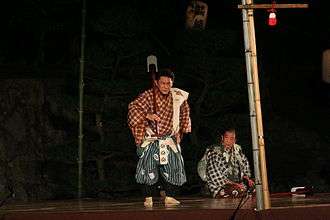



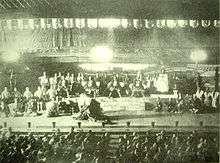
.jpg)
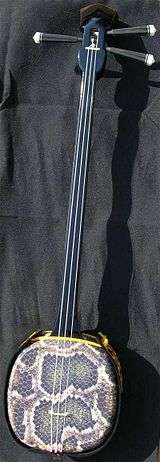
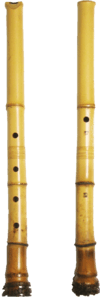
_III.jpg)

